Quality and Security in Great Hydroelectric Projects
Time:2024-11-14From:sinorock View:
The Expansion of Hydroelectric Projects in China
China’s commitment to expanding its energy capacity has resulted in the implementation of 27 major hydroelectric projects, with many others in the pipeline. These projects are crucial for meeting the growing demand for renewable energy and improving the nation’s infrastructure. However, as the scale of these projects grows, so does the complexity of their construction. The challenges of ensuring both quality and security during the rapid construction of these large-scale hydroelectric projects are immense. With tight schedules and high expectations, constructors are compelled to explore innovative methods to balance speed, safety, and structural integrity.
One such method that has emerged as an essential component in the construction of hydroelectric projects is the use of self-drilling anchor bolts. These innovative support systems have proven their effectiveness in providing secure foundations in challenging geological conditions. In this article, we will explore the importance of quality and security in hydroelectric projects, the role of self-drilling anchor bolts, and their practical applications in major hydroelectric projects in China.
The Importance of Quality and Security in Hydroelectric Projects
Hydroelectric projects are among the most complex and high-risk constructions due to their scale, the forces at play, and the geological challenges involved. The primary goals for any hydroelectric project are:
1. Timely Completion: Given the substantial financial and environmental investments, timely project completion is essential. Delays can lead to increased costs, environmental impacts, and lost opportunities for power generation.
2. Safety and Security: Safety is paramount, not only for the workers involved but also for the communities downstream. Ensuring that the dam, tunnel, and other infrastructure are stable and resistant to natural disasters such as floods, earthquakes, and debris flows is critical for the long-term security of the project.
3. Structural Integrity: The stability of the structure over time is essential. This includes preventing erosion, maintaining water-tightness, and ensuring that the foundation remains solid even in challenging geological conditions.
4. Cost-Effectiveness: Efficient construction methods that save both time and money are essential for the success of large-scale hydroelectric projects. This includes using innovative materials and techniques that reduce labor costs and construction time while improving safety.
To meet these objectives, a combination of advanced engineering techniques, quality control measures, and effective construction materials is required. The use of self-drilling anchor bolts plays a critical role in achieving these goals, particularly in ensuring structural stability and safety in complex geological environments.
Self-Drilling Anchor Bolts
Self-drilling anchor bolts are a type of ground support system that combines drilling, grouting, and anchoring in one efficient operation. Unlike traditional anchor bolts, which require separate drilling and grouting operations, self-drilling anchor bolts are designed to drill into the rock or soil, inject grout, and secure themselves in place all in a single step. This method reduces labor costs, saves time, and provides a stronger, more stable foundation.
These anchor bolts are especially valuable in complex geological conditions, such as loose soil, fractured rock, or high-water-table areas. Their versatility and efficiency make them the most widely used support method in the world today. In addition to their ease of use, self-drilling anchor bolts offer several key advantages:
1. Time-Saving: The combined drilling and anchoring process significantly reduces the time required for installation, speeding up the overall construction process.
2. Labor-Saving: Fewer steps in the installation process mean less manual labor, reducing labor costs and minimizing the risk of human error.
3. High Efficiency: Self-drilling anchor bolts are designed to perform effectively in challenging geological conditions, offering enhanced stability and durability.
4. Increased Durability: These systems provide long-lasting support, making them ideal for projects that require high reliability and longevity.
5. Improved Safety: Self-drilling anchor bolts help stabilize the surrounding soil or rock, reducing the likelihood of landslides, rockfalls, or other safety hazards during construction and operation.
Application of Self-Drilling Anchor Bolts in Chinese Hydroelectric Projects
China’s rapid development of hydroelectric power plants has led to the widespread application of self-drilling anchor bolts in various challenging projects. Several notable hydroelectric projects in China have benefited from the incorporation of these advanced ground support systems. Below are some prominent examples:
1. Huaihe River Flood Diversion Project
The flood diversion project of the Huaihe River, which began operations in November 2014, is a critical infrastructure project designed to manage water flow and mitigate flood risks in the region. With an investment of 5.4 billion yuan, the project’s construction required innovative approaches to ensure both speed and quality.
In this project, constructors implemented a stringent quality control system, focusing on raw materials, equipment, support methods, and monitoring systems. Self-drilling anchor bolts were selected as the primary ground support solution, providing superior stability compared to traditional anchor systems. By combining the advantages of faster installation and higher reliability, self-drilling anchor bolts offered an effective solution for ensuring the safety and quality of the project.
The successful implementation of this system not only enhanced the structural integrity of the flood diversion infrastructure but also contributed to reducing construction time and minimizing disruptions to surrounding communities.
2. Centianhe Reservoir Expansion Project
Located in Hunan Province, the Centianhe Reservoir expansion project aims to increase the reservoir's capacity to support both flood control and electricity generation. The project faced numerous challenges, including steep and high slopes, extensive caves, complex geological conditions, and limited space for construction equipment.
To address these challenges, the project’s engineers focused on incorporating advanced technologies, such as digital control systems and new materials with impermeable functions. Self-drilling anchor bolts played a pivotal role in the project’s success, offering a reliable and efficient support method in difficult geological conditions. The use of these anchor bolts ensured the stability of the tunnel and surrounding structures, which were critical for maintaining the project’s integrity in the long term.
The introduction of self-drilling anchor bolts not only improved the project’s quality but also enhanced safety by providing stronger and more durable support for the foundation. This allowed construction to proceed in a more controlled and secure environment, ensuring that the expansion project was completed on time and within budget.
3. Hanjiang-to-Weihe River Project
The Hanjiang-to-Weihe River Project in Shaanxi Province involves the diversion and delivery of water across a vast distance, including a 98.3-kilometer-long tunnel through the Qinling Mountains. The tunnel’s deepest point reaches over 2,000 meters, presenting significant construction challenges. The project also faced natural hazards such as torrential floods and debris flows, which further complicated construction efforts.
To tackle these challenges, self-drilling anchor bolts were used as a primary support method, providing crucial stabilization in the face of unpredictable geological conditions. These anchor bolts helped reinforce the tunnel and surrounding rock formations, offering vital safety guarantees during construction.
In addition to their practical benefits, self-drilling anchor bolts also provided increased efficiency in installation, reducing downtime and accelerating the overall construction process. The use of this technology contributed to the project’s ability to withstand natural disasters and ensured that the tunnel remained stable and secure throughout its construction.
Conclusion: The Key Role of Self-Drilling Anchor Bolts in Ensuring Quality and Security
In conclusion, the rapid expansion of hydroelectric projects, particularly in China, requires innovative methods to ensure the timely, safe, and high-quality construction of these complex infrastructures. Self-drilling anchor bolts have proven to be an essential technology for providing stability and security in challenging geological conditions, ensuring that projects meet both safety standards and efficiency goals.
From the flood diversion projects of the Huaihe River to the ambitious Hanjiang-to-Weihe River Project, self-drilling anchor bolts have demonstrated their effectiveness in a variety of contexts, helping to ensure the structural integrity of hydroelectric infrastructure. As the technology continues to evolve, self-drilling anchor bolts will remain a critical component in the successful completion of future hydroelectric projects, contributing to the ongoing development of renewable energy sources worldwide.
By embracing this technology and maintaining a strong focus on quality control, hydroelectric projects can continue to meet the growing energy demands while ensuring safety and sustainability for generations to come.
latest news
-
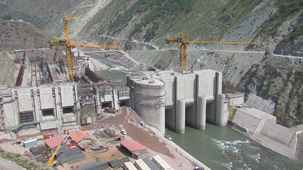
- What Are the Applications of SDA Bolts in Hydropower Stations?
- Time:2025-08-21From:This Site
- Learn how self-drilling anchor bolts enhance slope stability, tunnel support, and dam reinforcement in complex geological conditions at hydropower stations. Optimize hydropower projects with efficient, cost-effective, and eco-friendly solutions.
- View details
-
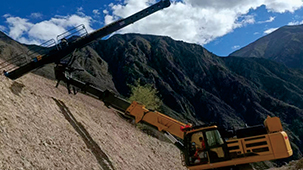
- Slope Stabilization with SDA Bolts: Benefits & Applications
- Time:2025-08-19From:This Site
- Discover how self-drilling anchor bolts (SDA bolts) provide superior slope stabilization for highways, railways, and tunnels. Learn their key benefits, installation process, and real-world applications in loose or collapsible soils.
- View details
-
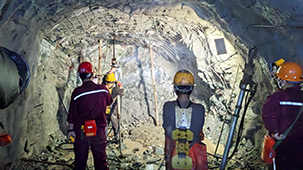
- How Self-Drilling Rock Bolts Enhance Tunnel Support in Fractured Rock?
- Time:2025-08-15From:This Site
- Discover how self-drilling rock bolts enhance tunnel support in fractured rock. Learn their benefits, installation steps, and real-world applications for safe, efficient tunneling.
- View details
-
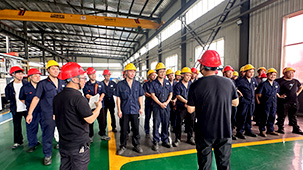
- Sinorock 2025 Quality Month | Strengthening Quality Foundations, Empowering Product Excellence
- Time:2025-08-13From:This Site
- Sinorock’s 2025 Quality Month, themed “Strengthening Quality Foundations, Empowering Product Excellence,” successfully concluded, reinforcing our commitment to superior product quality.
- View details
-
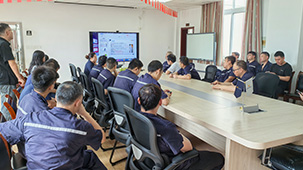
- Sinorock Safety Month 2025 | Everyone Speaks Safety, Everyone Can Respond
- Time:2025-07-03From:This Site
- Sinorock Safety Month 2025, centered on the theme "Everyone Speaks Safety, Everyone Can Respond - Spot Workplace Hazards," has wrapped up successfully!
- View details
-
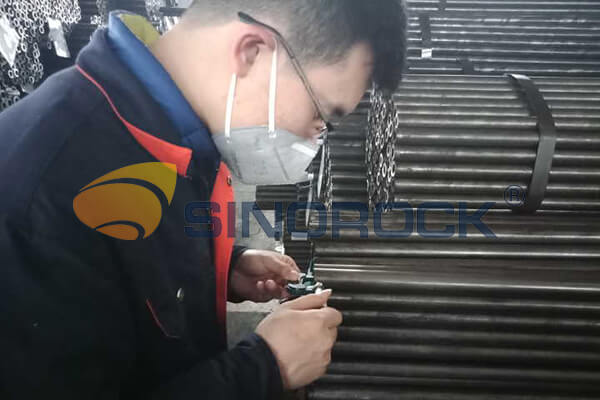
- Quality Control: the Vital Factor of A SDA Bolt Factory
- Time:2025-01-09From:This Site
- Sinorock’s comprehensive quality control system, from supplier management to outgoing inspections, ensuring the highest standards for self-drilling anchor bolts in construction.
- View details
-

- Sinorock Invites You to Explore Proven Self-Drilling Anchor Bolt Solutions at bauma 2025
- Time:2025-03-07From:This Site
- From April 7–13, 2025, explore Sinorock’s Self-drilling anchor bolt solution at Booth C2.513/4 in Hall C2 of the Messe München Exhibition Center (Munich, Germany).
- View details
-
.jpg)
- SINOROCK to Attend EXPOMINA PERÚ 2024 in Lima, Peru
- Time:2024-08-10From:This Site
- Sinorock to Attend EXPOMINA PERÚ 2024 in Lima, Peru
- View details
-
.jpg)
- SINOROCK to Participate in MINING AND METALS CENTRAL ASIA 2024
- Time:2024-08-08From:This Site
- SINOROCK to Participate in MINING AND METALS CENTRAL ASIA 2024
- View details
 Download
Download 


